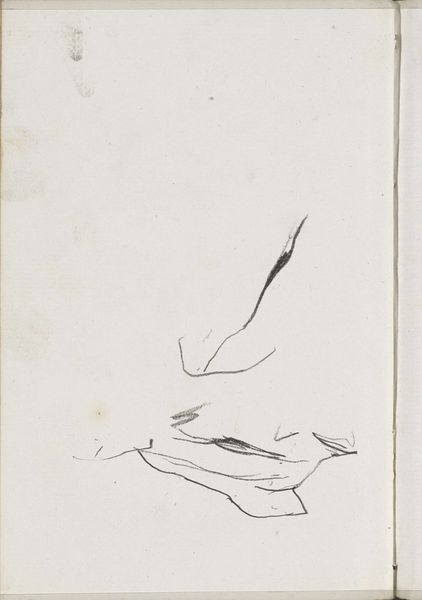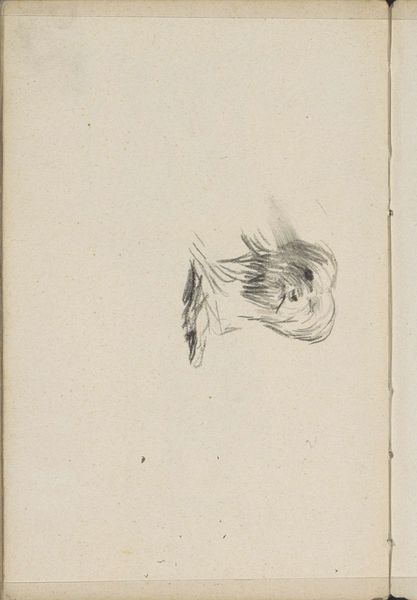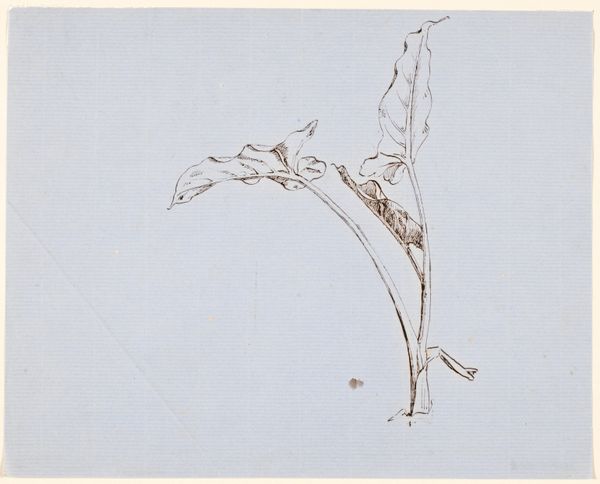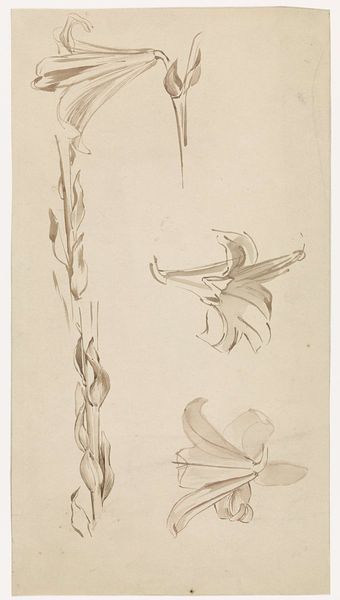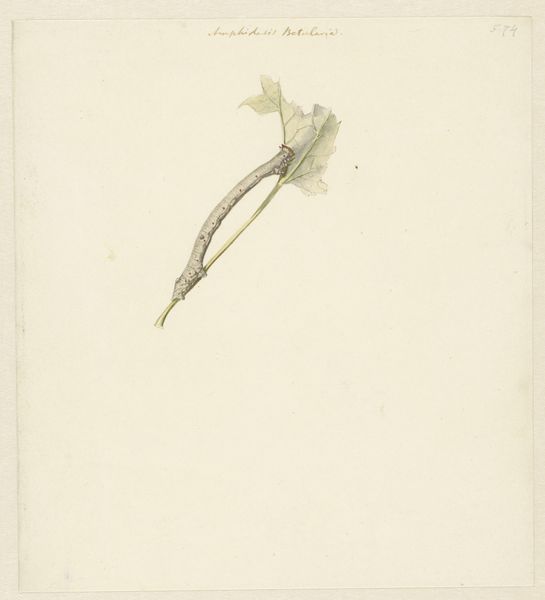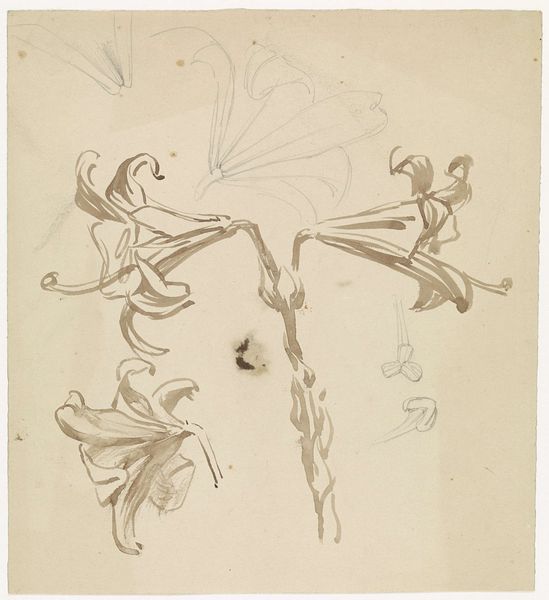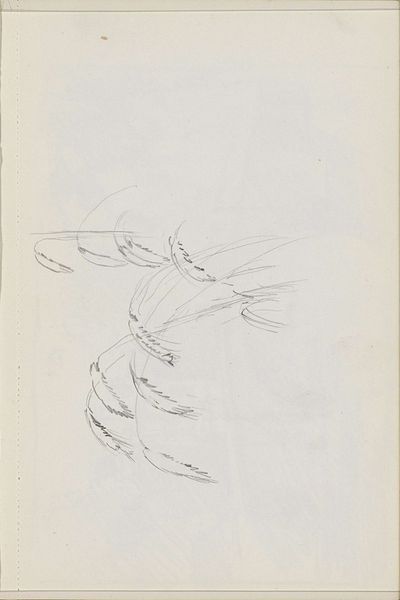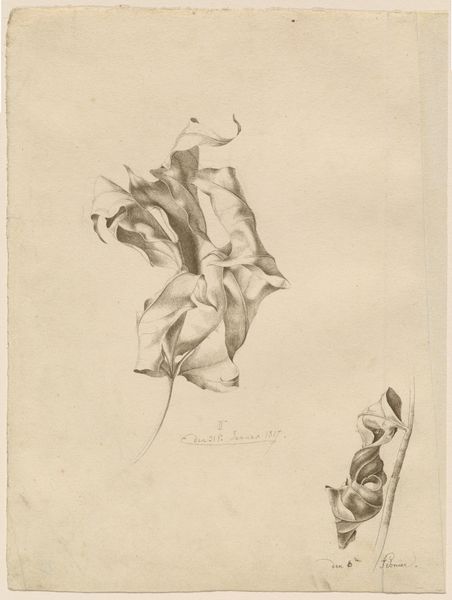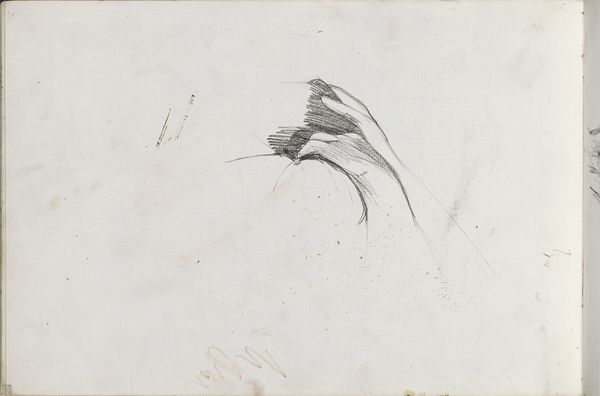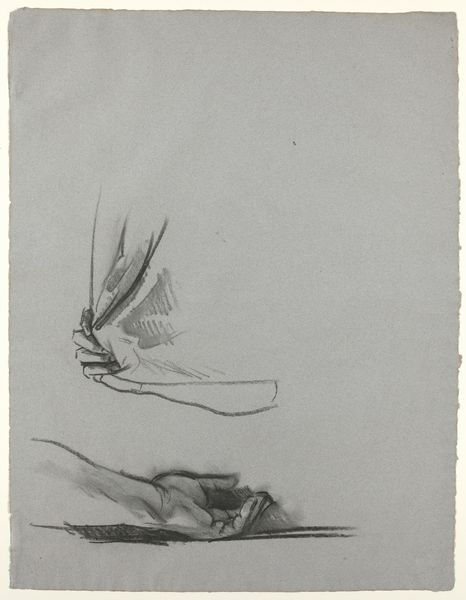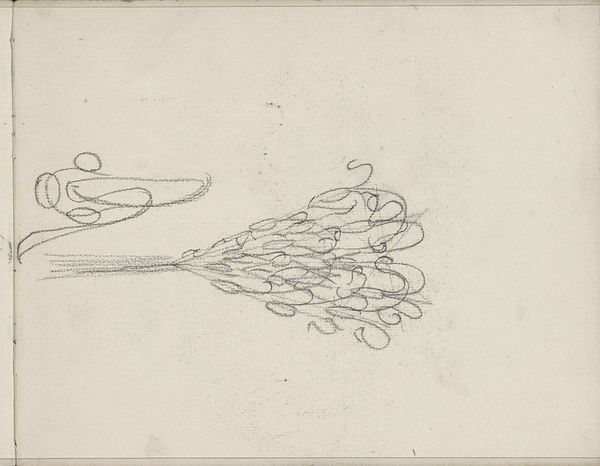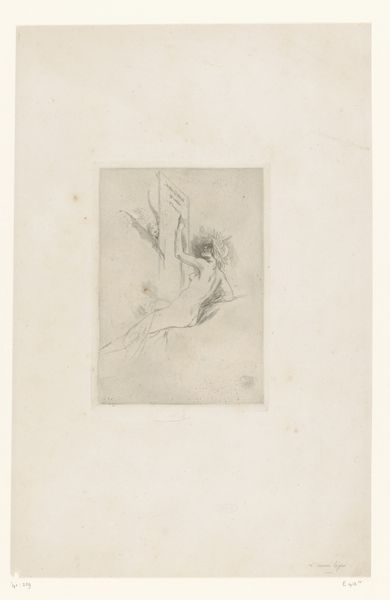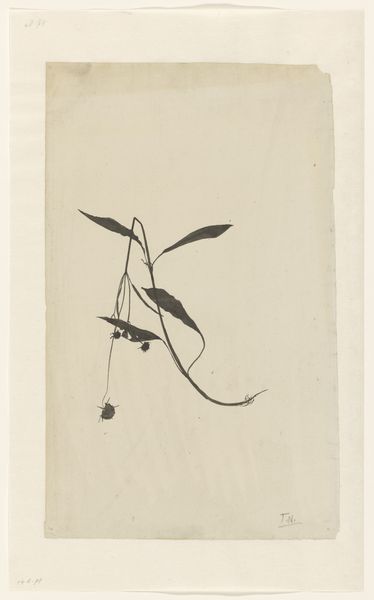
Dimensions: 28 x 20.3 cm (11 x 8 in.)
Copyright: CC0 1.0
Curator: Standing before us is John Ruskin’s “Withered Rush-blossom (Exercise in Lamp-Black),” undated, but likely from the 1870s. It resides in the Harvard Art Museums collection. Editor: It’s stark, almost ghostly. The lamp-black gives it such a delicate, ephemeral feel. Curator: Lamp-black, a pigment derived from soot, was readily available, inexpensive. Ruskin's focus on it speaks to a deep engagement with accessible materials. Editor: And it’s not just about the soot, is it? Ruskin was obsessed with the symbolism of decay, of acknowledging the inevitable decline in nature. Curator: Precisely! He saw beauty not just in idealized forms, but in the process of withering, reflecting a broader philosophical interest in mortality and truth. Editor: So, a humble material, lamp-black, used to capture a moment of fading life. It makes you wonder about the labor involved, the artist's hand so intimately tracing the blossom's decline. Curator: It's a poignant reminder that even in decay, there's an inherent beauty, and Ruskin, as always, sought to illuminate it.
Comments
No comments
Be the first to comment and join the conversation on the ultimate creative platform.
